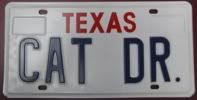I can't vouch for the accuracy, but I thought I'd share it just because it is a little different than the seat of the pants way I usually work!
This is the computer version of the diagram that was on the back of a paper plate.

Gregg









EPGregg wrote:I spent some time this summer with some really great guys that happened to be engineers.

bdosborn wrote:So how do you tell where the CG of the trailer is?

 Mark (& Cindi)
Mark (& Cindi) 



planovet wrote:bdosborn wrote:So how do you tell where the CG of the trailer is?
My thought exactly...
 Spooky Magic??
Spooky Magic??

bdosborn wrote:So how do you tell where the CG of the trailer is?
Bruce

 )
)
EPGregg wrote:But certainly not automotive engineers who had studied trailer dynamics, or they wouldn't have come up with such a load of bulls**t.
For example, the absence of speed from the equation shows they don't understand the subject - trailer whip/sway/instability is speed-dependent, which is how come it only strikes above a certain speed (different for each trailer/tug combination).
It looks like they tried to make an equation that matched what they think they typically see driving down the road - put it in a formula and it looks like they know what they're talking about.
There are scientific papers on trailer stability but you need the Greek alphabet as well as the Roman one to cover all the terms that go in the equations. And the distance between the tow vehicle bumpers is certainly not one of the terms!
Andrew
Mauleskinner wrote:bdosborn wrote:So how do you tell where the CG of the trailer is?
Bruce
Step 1: Obtain 3 scales (you can use one and move it around, but it's a lot easier with 3)
Step 2: Place the trailer on the scales...one under each wheel, the third under the hitch stand.
Step 3: Level the trailer front-to-back and side-to-side using blocking as necessary...you can put the blocking between the scales and the wheels, but you have to remember to subtract it's weight from the readings.
Step 4: Read the scales. Oh...write down the numbers, too.
Step 5: Determine a "datum" for measurement...if you use the axle as your datum, the math is a LOT easier.
Step 6: Measure the distances from the datum to the wheels in inches ...using the axle as datum, simply measure the distance from the axle to the hitch stand.
Step 7: Using the formula WEIGHT x ARM = MOMENT, make the appropriate calculations:
(Scale reading under left wheel) x 0 = 0
(Scale reading under right wheel) x 0 = 0 (I told you the math was easy this way)
(Scale reading under hitch stand) x (distance measured) = ???
Add up the three scale readings (less the weight of blocking).
Take the total MOMENT, which in our case is simply the ??? number, since we're doing things the easy way, and divide by the total weight of the trailer. The resulting number is the number of inches forward of the axle your CG is located.
(???) / (total weight) = CG
Have fun!
David[/list]

 Mark (& Cindi)
Mark (& Cindi) 



 .
.

planovet wrote:Mauleskinner wrote:bdosborn wrote:So how do you tell where the CG of the trailer is?
Bruce
Step 1: Obtain 3 scales (you can use one and move it around, but it's a lot easier with 3)
Step 2: Place the trailer on the scales...one under each wheel, the third under the hitch stand.
Step 3: Level the trailer front-to-back and side-to-side using blocking as necessary...you can put the blocking between the scales and the wheels, but you have to remember to subtract it's weight from the readings.
Step 4: Read the scales. Oh...write down the numbers, too.
Step 5: Determine a "datum" for measurement...if you use the axle as your datum, the math is a LOT easier.
Step 6: Measure the distances from the datum to the wheels in inches ...using the axle as datum, simply measure the distance from the axle to the hitch stand.
Step 7: Using the formula WEIGHT x ARM = MOMENT, make the appropriate calculations:
(Scale reading under left wheel) x 0 = 0
(Scale reading under right wheel) x 0 = 0 (I told you the math was easy this way)
(Scale reading under hitch stand) x (distance measured) = ???
Add up the three scale readings (less the weight of blocking).
Take the total MOMENT, which in our case is simply the ??? number, since we're doing things the easy way, and divide by the total weight of the trailer. The resulting number is the number of inches forward of the axle your CG is located.
(???) / (total weight) = CG
Have fun!
David[/list]
Sorry I asked!



Return to Teardrop Construction Tips & Techniques
Users browsing this forum: No registered users and 8 guests